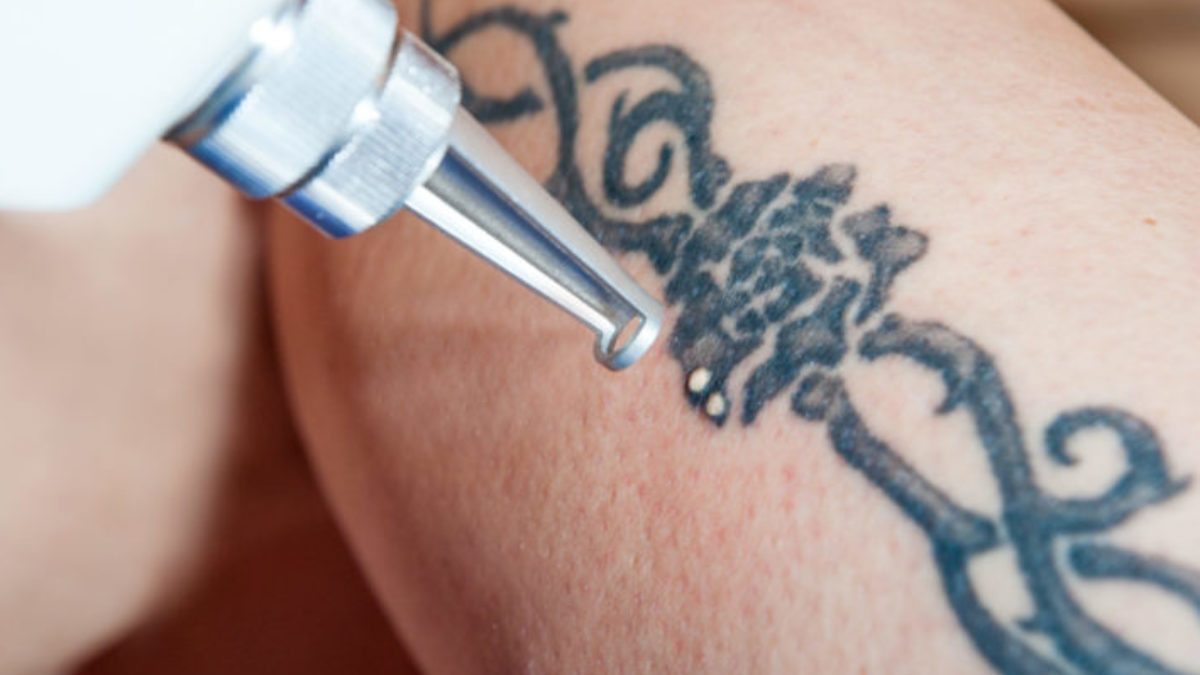Tattoos are mostly thought of as permanent markers on your body, and once they’re inked, they’re stuck for life. But sometimes, you may end up wishing it was gone for good. It could be a person’s name who you no longer speak to, or it could be that the art doesn’t suit your style anymore as you’ve grown. However, you don’t have to be stuck with an unsightly tattoo for the rest of your life, thanks to laser tattoo removal. For more information, keep reading and find out everything you should know about tattoo removal.
How Is It Removed?
Tattoo removal is done by lasers that work to disperse the pigment under the skin and force it to surface. The ink rises to the top of the skin and forms a scab or blister, that once healed, falls out. In the same way that if you pick a fresh tattoo scab off before it’s healed, the ink can fall out, the scabs that form after laser removal fall off and take the ink with them. Once it’s healed, the tattoo will look lighter and can eventually disappear altogether if you have enough sessions.
How Many Sessions Do I Need?
Each tattoo is different, so the number of sessions you need will depend on lots of factors. For example, a larger tattoo will need more sessions, as will full colour ones. Certain pigments like red can be harder to remove, so there could be parts of the tattoo that needs more work than others. On the other hand, a small tattoo can take far fewer sessions to remove as it requires less laser, and the pigments may lift out easier. It’s best to discuss things with your chosen practitioner beforehand so that you know how many sessions you’ll need. What you may think is an easy removal, could actually be a lengthy process.
What Are The End Results?
Your final result will depend on what you’re going for. Some people only have enough sessions to lighten the tattoo enough for it to then be reworked by a tattoo artist. This way they can have a brand new tattoo that’s better than their old one. However, a lot of people are wanting to remove the tattoo completely. This can be achieved sometimes, but not always. It depends on how the tattoo fades over the course of your sessions. You might find that it lightens enough to be barely visible, and you may be quite happy to leave it there. But if you want it to be completely invisible, you may need to have further sessions. It’s always a good idea to talk through your desired results beforehand so that the studio can provide you with the best treatment plan.
The Pain Factor
Tattoo removal isn’t pain free, so you should expect it to hurt a fair bit. However, some places will allow the use of numbing creams but make sure you check with them before using any. Although the laser process will hurt, it isn’t unbearable, and many people find that they cope with it way better than they thought. Pain is very subjective, so if one person says it was the worst pain they’d ever felt, take it with a pinch of salt. You may find that it’s not half as bad as you imagined, so try not to let any horror stories you hear scare you off.
Aftercare
Just as you care for your fresh tattoo, you need to take extra care of your laser removal to ensure that it heals properly. If you don’t follow the aftercare advice given to you by the place you had the treatment, you could cause healing problems that lead to scarring. The blisters and scabs will take time to heal on their own, so make sure you don’t pick or knock them so you can get the best results possible from the laser treatment.
Can I Tattoo It Again?
Once the area is healed, you can get another tattoo over the top. Some people choose to only lighten the ink instead so they can get it covered up with something better. If you’re wanting to tattoo over the lasered area, this is another reason why you need to ensure you look after it correctly. Improper aftercare can cause scarring, and sometimes it’s not possible to tattoo over it if it’s bad, so make sure you keep this in mind.
Tattoo removal isn’t something you should enter into lightly. It takes a lot of time, recovery, and money to follow through with the entire treatment, so make sure you’re committed to the journey. If you’ve got a tattoo that you regret, you’re no longer limited to just covering it up with another tattoo or learning to deal with it. Laser removal can provide you with a way to get rid of the ink you detest so much and give you back the skin you feel comfortable in.

